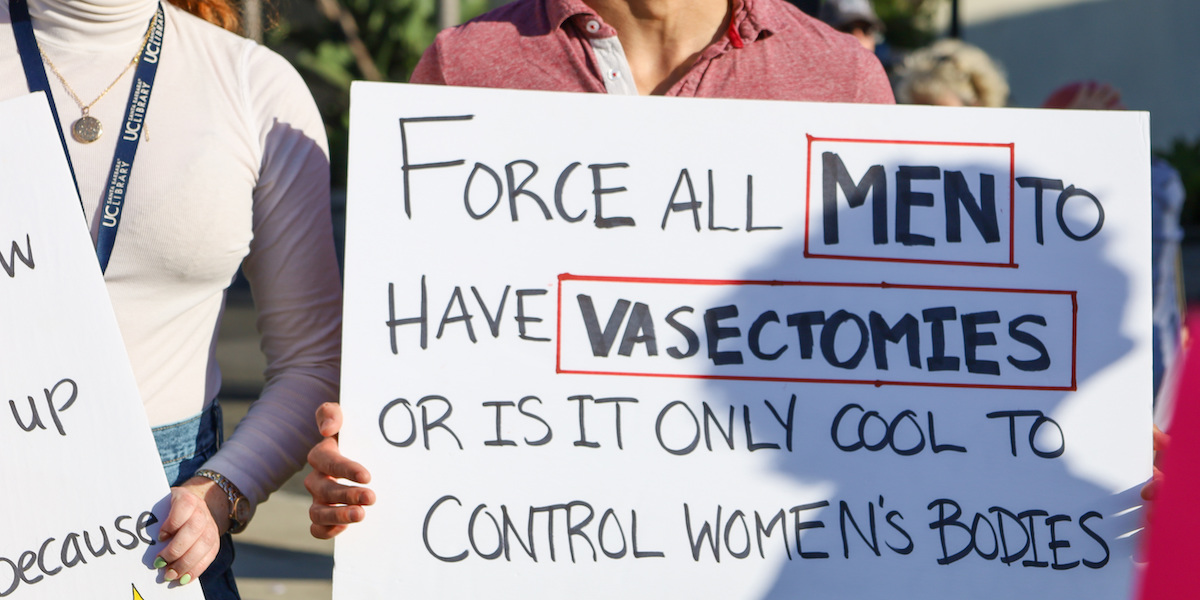Since the federal repeal of abortion rights in the United States almost a year ago, not only have women’s requests for emergency contraceptives and abortion pills increased, but so have men’s requests for vasectomy. They are sterilization interventions, always with the aim of avoiding unwanted pregnancies.
Vasectomy is a small operation in which the scrotum is incised and the two vas deferens are cut, i.e. the two vessels that connect the testicles to the ejaculatory ducts and allow the passage of sperm through the penis. The operation lasts about fifteen minutes and is done under local anesthesia. Vasectomy is a form of permanent contraception, believed to be effective in over the 99 percent of cases. Sometimes people who want to keep their ability to have children freeze their sperm before using it, so they can use it later.
Although less known than other contraceptive practices, vasectomy has been and is used in several countries. In the western ones it is not the first time that there have been increases in requests following specific events: it also happened with the economic crisis of 2008when for many families to have children, or other children, would have been unsustainable from an economic point of view.
Even before the Supreme Court ruling that revoked the right to abortion, there had been an increase in vasectomy requests in the United States: some men even had claimed this choice as an act of protest against the freedom to choose to avoid pregnancies, or as an act of solidarity with women, a way of sharing contraception more equally.
But requests for information on this practice – and in many cases the increase in its use – have increased quite sharply after June 24, 2022, the date of the sentence (the “Dobbs v. Jackson Women’s Health Organization”or more simply Dobbs).
According to the data of Google Trends, the Google application that shows the trend of searches for words or groups of words in a given period and in a given geographical area, there was a very sharp peak in searches for the word “vasectomy” of the ruling, along with other words related to the revocation of the right to abortion, such as “abortion” and “Roe” (“Roe v. Wade” is the 1973 Supreme Court ruling that guaranteed the right to abortion, overturned by the Court supreme last June).
And relationship by Innerbody Research, a US research organization, showed how searches for the phrase “where can I have a vasectomy” increased by 850 percent in the days following the ruling on abortion rights, with the largest increases in particularly conservative states such as Texas and Florida.
Then there are a number of urologists and clinics who have told several newspapers – including the Washington Post and theEconomist – how much not only the requests for information and consultations on the possibility of resorting to vasectomy have increased, but also the actual interventions. Testimonies that seem to be confirmed by the net increase in claims for insurance reimbursement for this type of intervention, according to Komodo Health, a company that collects data in the health sector in the United States.
According to estimates made by theEconomistwhich was based on data from Komodo Health and combined them with those available from previous years, in the first six months after the revocation of the right to abortion there was an overall increase of 17 percent in vasectomy operations, for a total of about 20,000 men more than the average, and with a peak in the immediately following three months, between July and September, when the increase would have been 29 percent.
Again according to these estimates, the increase in interventions would have been recorded in 46 states, with a greater increase in those with more restrictive rules on abortion, where the average increase in recourse to this practice would have been 41 percent compared to 26 percent of other states.
